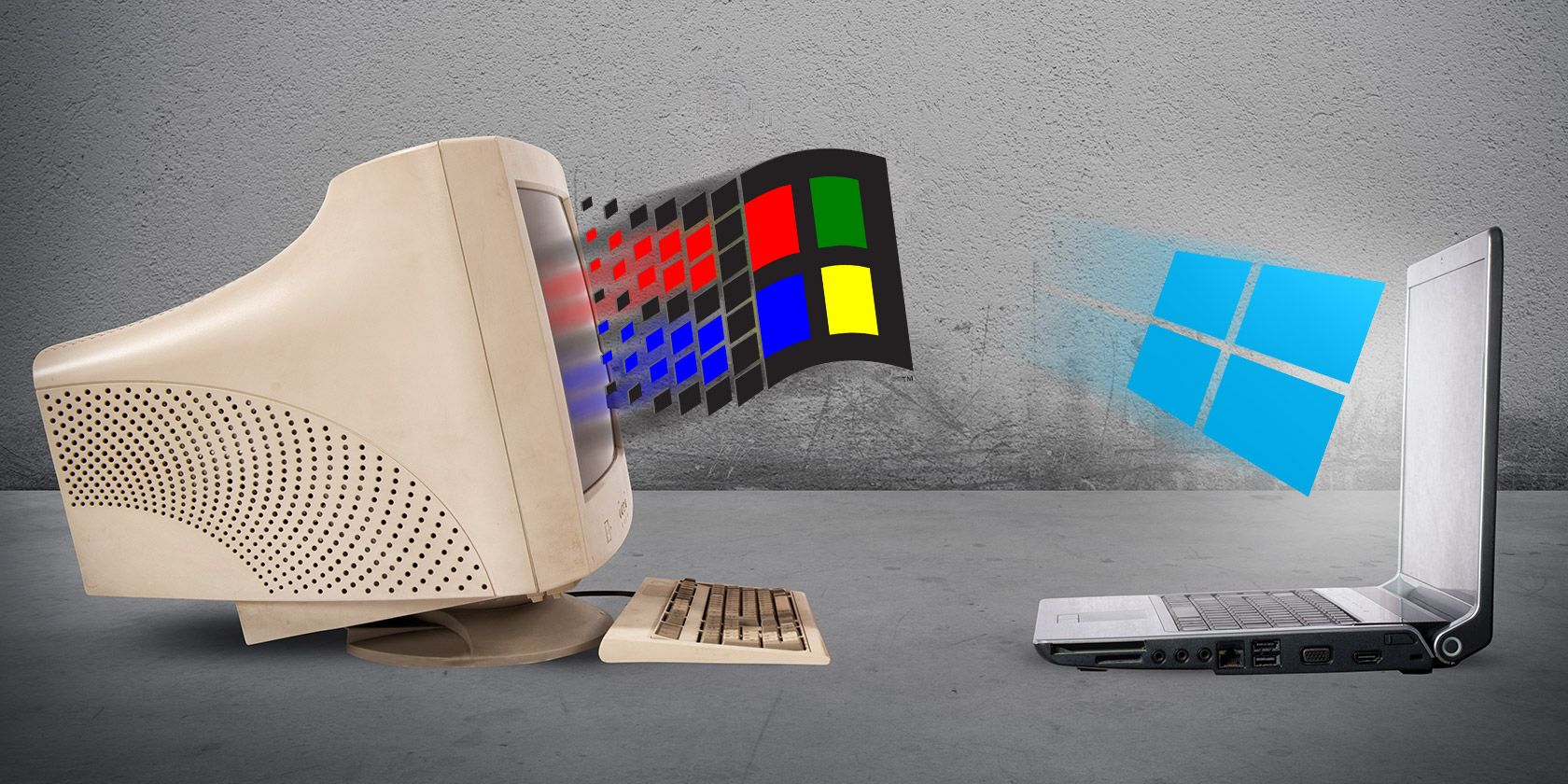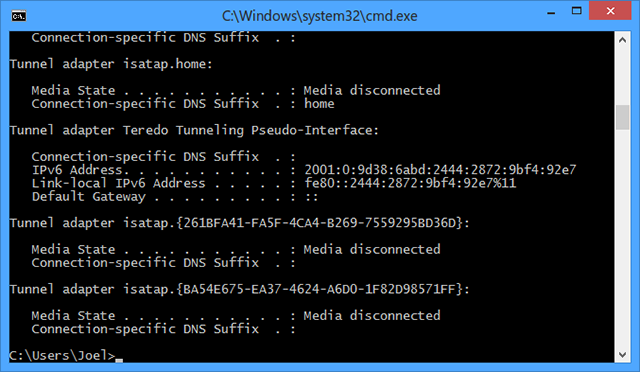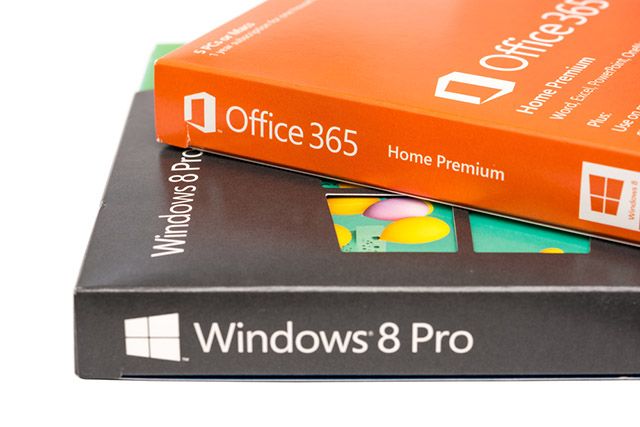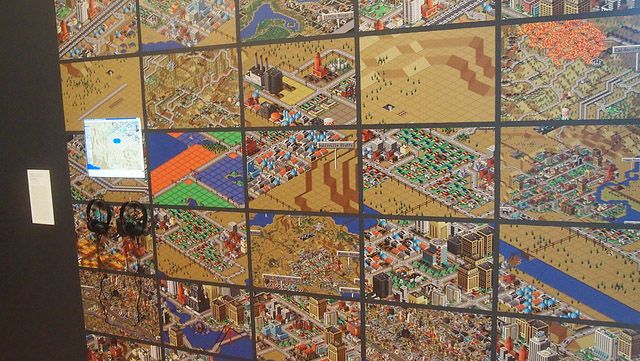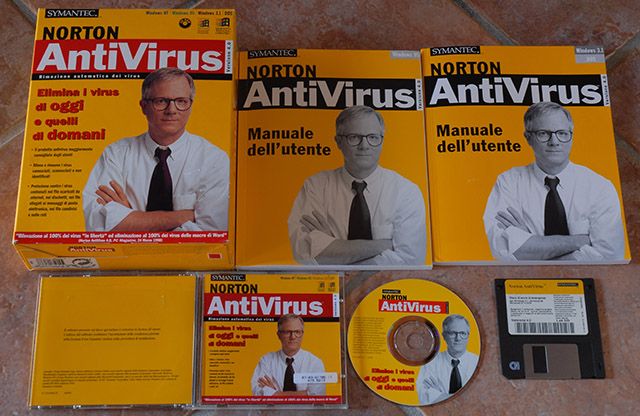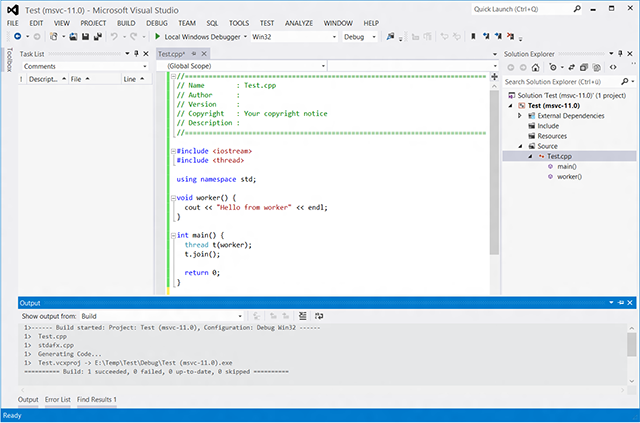They say technology advances at an exponential rate and a lot can change in a year. That's true, of course, so how impressive is it that so many of the programs we use today have been around for multiple decades? Quite impressive, if you ask me.
Walking down Nostalgia Lane is nothing new here at MakeUseOf. This particular trip was inspired by our readers when we asked about the oldest PC software you still use today. The answers blew us away and brought smiles to our faces.
So let's take a look at the oldest surviving Windows programs that still reign in popularity today. What we find may surprise you.
Command Prompt (1981)
The average Windows user has never used the command prompt, which makes sense because we don't really need the command prompt anymore. Almost everything can be done through a graphical interface. So why do we still have this "outdated" option?
The command prompt finds its roots in MS-DOS, a small piece of software that wasn't even developed by Microsoft. A guy named Tim Paterson developed 86-DOS over six weeks in 1980 and sold it to Microsoft in 1981, who then renamed it to MS-DOS.
MS-DOS would go on to revolutionize the PC industry as Microsoft licensed it to hundreds of companies and continued to build additional features on top of it.
Some x86 systems still use MS-DOS today, but modern versions of Windows have moved on to CMD.EXE, a command line interpreter that was first released on Windows NT in 1993. With the advent of Windows 10, Microsoft will be moving onto a more advanced command line called PowerShell.
Microsoft Office (1982)
There are a lot of things that people don't know about Microsoft Office. While Microsoft Office suite wasn't introduced until 1990, its individual components existed as far back as 1982. Not only that, but prior to Microsoft Office there was Microsoft Works which was smaller and cheaper.
Another fact that people don't know: we often view Microsoft Word as the primary application in the Office suite, but Microsoft Excel actually existed first. Granted, it was originally named Multiplan and didn't get renamed to Excel until 1995, but it is what it is.
Likewise, Microsoft Word was originally named Multi-Tool Word before it was renamed to Word for Windows in 1989.
Their biggest competitors at the time were Lotus 1-2-3 (for spreadsheets) and Corel WordPerfect (for word processing), but Microsoft stuck it out and emerged as the market winner after several years. Now Word and Excel are two of the most widely used programs in the world.
SimCity (1989)
SimCity may not be the oldest game around -- not by a long shot -- but it has certainly proved to be one of the most robust titles of the past couple of decades. After all, it debuted in 1989, yet continues to produce sequels with the latest SimCity being released in 2013.
The original game earned its reputation for being a complex game like no other before it. As city mayor, your goal was to work within budgetary limitations while expanding a city to be as profitable and livable as possible. In a lot of ways, SimCity pioneered the entire "simulation" gaming genre.
Today, the gameplay has become so popular that SimCity clones exist all over the place. If PC gaming isn't your style, you can always scratch that itch with these mobile SimCity alternatives instead. Then again, others think that clones aren't good enough and that everyone should just return to playing SimCity.
Adobe Photoshop (1990)
Adobe Photoshop was initially created in 1987 by a lone PhD student named Thomas Knoll, who went on to sell it to Adobe Systems in 1988. After two additional years of development, Adobe released the first version of Photoshop in 1990 for Macintosh systems only.
It wasn't until the 2.5 version release in 1992 that Photoshop became available for Windows systems. Since then, Adobe went through several version cycles until 2003 when they switched their branding over to Creative Suite.
Ten years later, Adobe abandoned the Creative Suite label in favor of Creative Cloud, which coincided with a shift in their business model towards a monthly subscription for access to their software.
If you lived through the 90s, you probably recognize the name of one of Photoshop's most popular alternatives: PaintShop Pro. It released in the same year as Photoshop and met some initial success, but eventually disappeared under Photoshop's massive shadow.
SnagIt (1990)
There are several ways to take a screenshot on a Windows system and there are third-party screenshot tools that make it even easier. One of those third-party tools, SnagIt, is consistently rated as one of the best for the job.
Who knew that this program has been around since 1990? Not me.
At first, SnagIt was a simple replacement for the built-in Print Screen functionality on Windows. Over the years, the feature set has expanded to include performance and convenience improvements like different selection formats, different capture methods, format converters, and even post-process editing.
With a price tag of $49.95, it's certainly not cheap. However, many people -- including our former managing editor -- swear by SnagIt and how it improves screenshot-related productivity. It comes with a 15-day free trial in case you want to try it out.
Norton AntiVirus (1991)
When it comes to antivirus software on Windows, there's no clear winner that comes out on top. However, there are a few names that deserve the flak that gets fired their way. Norton AntiVirus is one of those programs.
People often complain about Norton and how it negatively impacts their computer performance. They also complain about Norton's aggressive pestering of users for money. But the worst part is that Norton isn't much better -- if at all -- than free alternatives.
Do you have Norton installed? Here's how to uninstall Norton completely.
That being said, Norton does deserve a bit of praise for lasting as long as it has, even with the reputation it has built over the years since it debuted in 1991. This just goes to show that even highly-criticized, widely-hated programs can still succeed.
Microsoft Visual Studio (1995)
Microsoft Visual Studio first arrived on scene in 1995, but its roots reach much further into the past. Visual C++ debuted in 1983 and Visual Basic came out in 1992, the same year that Microsoft acquired Visual FoxPro.
The first version of Visual Studio packaged all three of these together, plus a fourth program called Visual SourceSafe. As of today, both FoxPro and SourceSafe have been discontinued while the rest of the suite continues to thrive.
In 2014, Microsoft announced a change in company direction and a desire to open up the Microsoft ecosystem to non-professionals. This included a free version of Visual Studio 2013 that wasn't gutted and limited like their previous Express versions.
It's safe to say that Microsoft has definitely come a long way and it'll be exciting to see where they end up a few years from now.
And History Moves On
Did you enjoy that stroll down Nostalgia Lane? If you want to explore some of these older versions first-hand, check out these websites for downloading old software. You may need to tinker around to get old programs running on modern Windows.
For more memory-tickling goodness, continue your trip across these websites for 90s nostalgia.
Do you still use software that existed back in the 80s and 90s? Are there any programs that you would never give up? Do you yearn for the "golden days"? Tell us what you think in the comments below!
Image Credits: old computer to new Via Shutterstock, Microsoft Books Via Shutterstock, MoMA SimCity Via Isriya Paireepairit, Photoshop Before & After Via Graham Richardson, SnagIt Example, Norton AntiVirus Via Luigi Rosa

